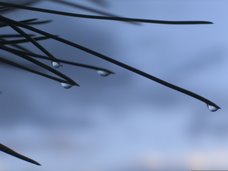This is a true story.
It’s about 12:15 in the afternoon on a Tuesday in May 1988. A TV News Reporter and Cameraman are sitting in the station-issued Chevy Blazer news vehicle in the drive-through lane of a fast food restaurant. One of the major chains- I can’t remember which one – aren’t they really all the same anyway? They’re ordering lunch – the typical meat-on-a-bun fare. A staple in the diet of a mid-market news crew that’s always on deadline. It has to be quick as they are on their way to yet another boring interview on another boring story.
A call comes in over the two-way radio (this was in the day before cellphones were standard issue). “Unit six, please respond.”
The cameraman picks up the radio. “Unit six, go.”
The guy on the news desk on the other end of the radio says, “Fam, we need you to head up to Belmont, we have a report of a vehicle hit by a train.”
“Roger that,” the cameraman says. “Do you have the coordinates?”
“Not yet, we’re working on it,” the desk responds. “Start rolling that way and we’ll get back to you.”
“10-4,” the cameraman replies. “You’ll have to reschedule our interview.”
“Got it,” says the desk.
The cameraman sets the radio handset in the cradle as they pull up to the window and pick up their lunch.
The reporter says, “I’d rather do this anyway than interview that city councilman.” A pause. “It’s a good thing we got something to eat first.”
The cameraman replies, “Belmont is about 45 minutes from here. If we spend 30 minutes at the scene and take 50 minutes to get back to the station, we’ll be fine for the early news.”
They head out toward Belmont. It’s mostly on the freeway, out of the city and into the rural area north of town. Mid-day there isn’t much traffic. It’s a nice spring day, a bit on the cool side but with the promise of summer just around the corner. Bright blue skies. A nice day for a drive – albeit toward what is probably a tragic incident.
Along the way the news desk calls back with two pieces of information. First are the coordinates – the crew now knows exactly where to go. The reporter pulls out the map (again, this is the pre-GPS era) and becomes the navigator for the cameraman.
The second piece of information is the outcome. “This one’s a fatal, guys,” the news desk says. “One victim.”
“Roger that,’ says the cameraman. The mood turns somber, but the sense of urgency increases. Now this will probably be the lead story on what had been, to this point, a light news day.
The crew drives on, exiting the freeway and turning toward Belmont, ending up on a two-lane blacktop through gently rolling, wooded hills. After 10 minutes or so, they crest a small rise and see the flashing lights of emergency vehicles ahead. As they get closer they can see the train crossing. The arms are down, lights still flashing. Two police cars, an ambulance and a fire truck are off on the shoulders of the road.
The cameraman parks the vehicle, goes around to the back and pulls out his gear. The reporter joins him, notepad in hand, and together they walk up to the crossing. Glancing about, the cameraman notices they are the news first crew to arrive.
They approach a police officer standing at the crossing. There are two tracks that cross the road here. There is not much traffic on this road, but occasionally a car will approach from one side or the other. The officer is here to wave the cars through, after looking down the tracks, as the crossing arms are locked down while the scene is investigated.
There’s no elegant way to ask. The reporter says to the officer, “What happened?
This is background only. The crew wants to get a sense of what’s going on before taping any interviews. The cameraman has set up his camera on the tripod and is getting some establishing shots of the scene as the reporter talks to the cop.
The officer says, “A vehicle was hit by a northbound train going between 55-60 miles an hour. There was one occupant in the vehicle, who is deceased.”
Hearing this, the reporter glances up the tracks to the north. The cameraman swings his camera up that way, resets his focus and zooms down the line. There’s not much to see, though, as the tracks begin to curve to the east and out of sight.
The officer continues, “The train had no warning. The vehicle pulled onto the tracks while the arms were down. Impact occurred before the engineer could hit the brakes.”
The cameraman is beginning to see, through the camera lens, debris along the side of the tracks. It’s difficult to tell exactly what he is seeing. Nothing he’s seen so far appears to be parts of the vehicle, but there is definitely ‘stuff’ along the tracks, beginning about 50 yards from the crossing and continuing until the track bends out of sight into the trees.
The reporter asks the cop, “How could the driver not see the train coming? The crossing arms were down at the time, weren’t they?”
The officer responded, “According to the train engineer, the arms were down. The vehicle was going around the arms when it was struck by the train.” He paused, the continued, “Apparently another train was on one of the tracks as the vehicle approached the crossing. The first train passed, but the crossing arms did not go up. The driver of the vehicle tried to go around the arms and was struck by a second train, coming from the other direction, on the second set of tracks.”
The cameraman picked up his camera and tripod and walked back to the spot where the vehicle would have parked as it waited for the train to go by. He panned his camera slowly, from what would have been the driver of the vehicle’s point of view. It became clear to the cameraman what the vehicle driver must have seen. The first train, heading south, passed on the near set of tracks. As it went by, it screened the driver’s view of a northbound train as it approached. He wouldn’t have heard it, assuming what he was hearing was the sound of the train that just passed.
The cameraman picked up his gear, walked around the crossing arm, and stood in the road between the two sets of tracks. Looking south, where the train would have been approaching, he tried to imagine the surprise, shock and horror the driver of the vehicle must have felt as he saw the train. He realized he was standing in precisely the spot where the train would have struck the vehicle.
The death zone.
This was the first time, he realized, the cameraman had stood in the exact spot where less than two hours ago another person had lost their life.
He was no stranger to death, of course. He had come to learn the old adage, ‘if it bleeds, it leads,’ is true in local TV News. He had seen his share of dead bodies, crime scenes where murders and grisly accidents had taken place. But this was the first time he stood on the exact piece of ground where someone took their last breath, saw their last sight, thought their last thought – in this case, most likely, “oh, sh--!!”
This cameraman was an introspective, contemplative sort. It was a sobering experience to stand here and record the images that would tell of the last moments of this person. At the same time, he had been around the block long enough to have developed a method of coping, of doing his job and not letting his emotions get in the way.
He finished getting his shots, picked up his gear, and made his way back to the reporter who was still talking to the cop. The two had been joined by the Lieutenant, who was supervising the scene. He agreed to speak on camera, giving the crew the requisite ‘sound bites’ that would be used to tell the story. He repeated the basic facts – a vehicle went around the railroad track crossing arms, which were functioning and in the down position during the accident. One train had passed the crossing, the crossing warning sign arms did not go up, the vehicle attempted to go around the crossing arms and was struck by a second train coming from the opposite direction. One vehicle occupant, killed on impact.
The reporter asked, “What type of vehicle was it?”
The police Lieutenant said, “I can’t release that information until the victims’ next of kin has been notified.”
After a couple of additional questions the interview was completed. The cameraman turned the camera off and asked the cop, “Can we hike down the track and get some footage of the scene?”
The officer replied, “You can go as far as you like, but the train is almost a mile away. This train was heavy and traveling at a high rate of speed. It takes a train like that a long time to stop, even when the brakes are locked up. It’s quite a hike to get to the engine.”
The cameraman and reporter conferred. “We don’t have time to get that footage and still make the early news,” the reporter said. “Let’s just go a little ways doen the line, get some debris footage and head back to the station.”
The officer said, “Be my guest, but watch where you step.”
The reporter said, “What do you mean?”
The officer said, “Off the record?”
“Sure,” said the reporter.
“The vehicle that was hit was a catering truck,” said the officer, “one of those ‘mobile lunch wagons’ that visit factories and manufacturing sites. It basically exploded on impact. There’s all kinds of lunch meat and food scattered down the line.”
He paused, took a breath and continued, “We aren’t sure we’ve found all of the body parts of the victim. We don’t have enough to make a positive ID. We assume there was only one victim because the company dispatcher told us who the driver was. We’re looking right now for something we can make a positive ID with – some dental work, a hand we can get a finger print from, something like that.”
“So, if you want to go down there and shoot some video, go ahead. But please don’t touch anything. And as I said, watch where you step.” He paused, and said, “and I wouldn’t do any snacking if you find something you think came from the truck.”
The cameraman and reporter look at each other.
“Let’s just get some shots from here and get going,” said the reporter to the cameraman. “Do you have enough footage?”
“I need a bit more. Give me a minute or two,” the cameraman replied.
The reporter went back to the news vehicle and got inside. The cameraman took his camera and shot for another two minutes or so, packed up and went back to the news vehicle. After stowing his gear, he got into the driver’s seat, started up, turned the car around and began to head back to the station.
They drove in silence for awhile – the reporter thinking about how to tell the story, the cameraman thinking about what he had seen and felt.
After a few minutes, the reporter reached into the lunch bag he got at the drive through earlier that day. He reached into the bag and pulled out his half eaten sandwich. He looked at it for a moment – the cameraman wondering if he would actually take a bite of the cold, soggy meal. Instead, the reporter looked up and said, “There’s a moral to this story, you know.”
“What’s that?” said the cameraman.
Taking a bite, through a mouthful of food, the reporter said, “It’s better to EAT the meat than BE the meat.”
It’s Great to be The Family Man.
If you enjoyed this post, visit The Camping Machine)to read more like it.
Monday, October 16, 2006
Subscribe to:
Post Comments (Atom)




8 comments:
wow, quite a different post from what i'm accustomed to here... but a great story nonetheless!
just out of curiousity, did you see anything that didn't look like it came from the caterer's kitchen when you went down?
Wow. Can't say that's an experience I'd want to have, but you tell it wonderfully - as you always do.
There is times when black humor is all you can hang sanity on to.
Aloha.
The family man, you remind me so much of my co-worker, who is someone with a wicked sense of humor, a keen observation, and much above average intelligence. He's approaching 50, and I am 35, and yesterday while we were in a group lunch together, the first thing he started saying was that he felt "old." Everyone at work constantly say how old they feel. I just don't understand that.
Why don't you submit your writing to a publishing company--I think you write as well as JD Salinger.
Family Man, Come on it is the Christmas Season you must have some funny Tommy and Chris stories to tell us. A visit to Santa, a gift making snafu with those two adorable boys you have to have some funny stories to tell us. Hope to be reading one of your stories soon.
We miss you family man and we miss your Story Telling Soul. The merriest christmas to you and your family.
Please come back.
Your Faithful Curious Reader
Merry christmas family guy!
Aloha!!!!!
Family Man, surely the boys have done something funny you can write about. We miss you and reading your wonderful stories! Hopefully in this new year you will begin writing again as you are sorely missed. You are one of the great writers in blog land !!!
Check out CARL & WESA'S WEDDING PICS HERE:
www.aprilgreer.blogspot.com
enjoy!
Post a Comment